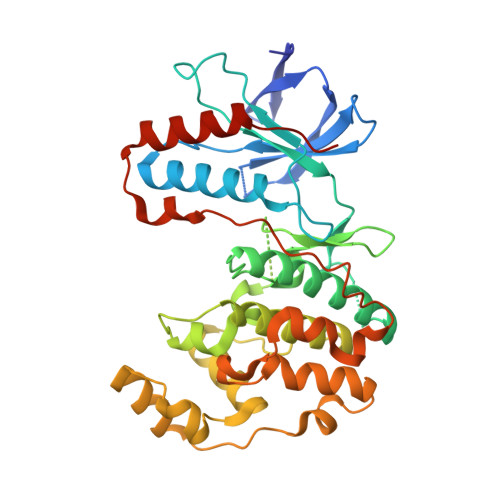The Design, Synthesis and Potential Utility of Fluorescence Probes that Target DFG-out Conformation of p38alpha for High Throughput Screening Binding Assay.
Tecle, H., Feru, F., Liu, H., Kuhn, C., Rennie, G., Morris, M., Shao, J., Cheng, A.C., Gikunju, D., Miret, J., Coli, R., Xi, S.H., Clugston, S.L., Low, S., Kazmirski, S., Ding, Y.H., Cao, Q., Johnson, T.L., Deshmukh, G.D., Dinitto, J.P., Wu, J.C., English, J.M.(2009) Chem Biol Drug Des 74: 547-559
- PubMed: 19843080
- DOI: https://doi.org/10.1111/j.1747-0285.2009.00884.x
- Primary Citation of Related Structures:
3K3I, 3K3J - PubMed Abstract:
The design, synthesis and utility of fluorescence probes that bind to the DFG-out conformation of p38alpha kinase are described. Probes that demonstrate good affinity for p38alpha, have been identified and one of the probes, PF-04438255, has been successfully used in an high throughput screening (HTS) assay to identify two novel non-classical p38alpha inhibitors. In addition, a cascade activity assay was utilized to validate the selective binding of these non-classical kinase inhibitors to the unactive form of the enzyme.
- Pfizer Research Technology Center, 620 Memorial Drive, Cambridge, MA 02139, USA. haile.tecle@pfizer.com
Organizational Affiliation:


















